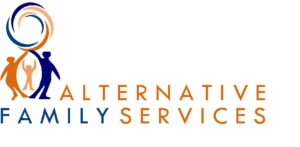How to Become a Resource Parent in California
Key Steps To Becoming a Foster or Fost-Adopt Parent in California
Introduction
There are over 400,000 foster youth in the United States, and around 51,000 just in California. Here, in the Golden State, roughly one-third of all foster youth live with non-relatives.
If you are interested in providing support and a home for youth in need in your community, it’s important to know how to become a foster parent (now known as a Resource Parent). You may want to start by visiting our Frequently Asked Questions page.
The main steps of becoming a resource parent in the state of California include these five steps.
Step One: See if You Are Eligible to Foster a Child, Teen, or Siblings
The best way to learn if an individual or couple is eligible to foster children or teens is to reach out to a foster family agency (FFA) like AFS or your county of residence.
A recruiter will answer your questions and help determine if fostering or adopting is right for you.
Step Two: Apply to be an Approved Resource Parent
- All potential Resource Parents must be approved before they can legally have foster youth living in their home. The approval process includes an application, home visits, background checks and non-relative references, family evaluation, among other requirements that can be found on our FAQs page.
- An individual or couple will begin the application process to become a resource parent either with a foster family agency (FFA) like AFS or with their county. At AFS, the applicant is guided through the entire approval process by a home approver.
- Home approvers answer applicant questions and assess that potential resource parents can provide stable, safe, and accommodating homes for foster youth. Some circumstances that may prevent a person from becoming a resource parent include lack of space for a child, inability to provide basic needs, and/or having been found guilty of certain crimes.
Step Three: Training
Resource Parents must participate in specific training (such as CPR or first aid) prior to a child, teen, or siblings being placed into their home. A dedicated foster care agency, like AFS, or a local education center, provides free trainings for resource parents.
Step Four: Placement
Every foster child, teen, and sibling group has unique needs and interests. Before a placement is made, a dedicated caseworker will provide guidance and insight to make the right match and ensure that the situation will be ideal for all involved parties. AFS caseworkers provide continuous support throughout the placement process to ensure everything goes as smoothly as possible.
Step Five: Welcome a Child into your Home
Once you have been approved to receive a placement, you’re placed on a vacancy list. Depending on what type of placement you’ve signed up for, you may be called upon to receive a child, teen, or siblings at any time.
A caseworker will provide round-the-clock support, in either English and/or Spanish, to make sure you have all the physical, mental, and emotional tools available to provide the foster youth with the love and care necessary to help them heal and thrive.
Interested in becoming a Resource Parent in Northern California?
Click here to begin the process with AFS
CONTACT US
(800) 300-1022
rfarecruitment@afs4kids.org
Si necesita hablar con alguien en español: (800) 300-1022
